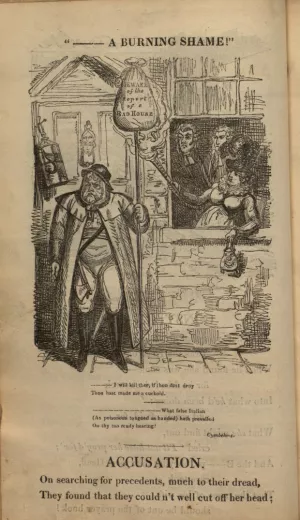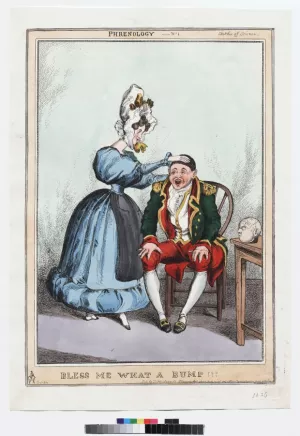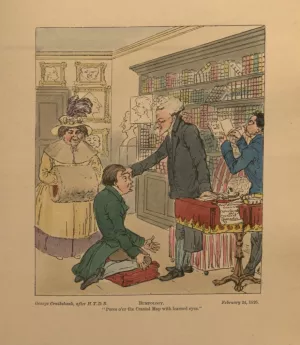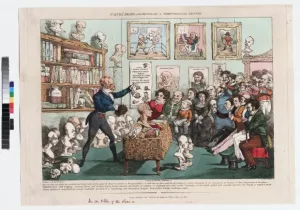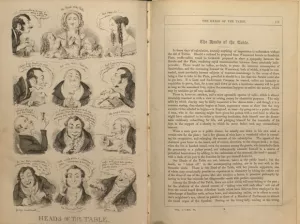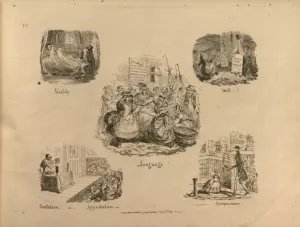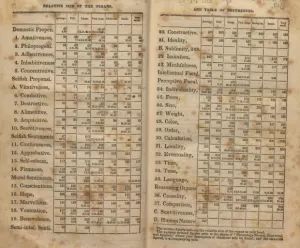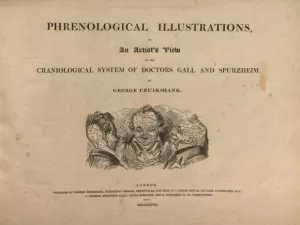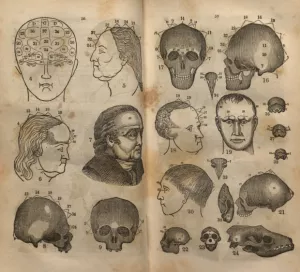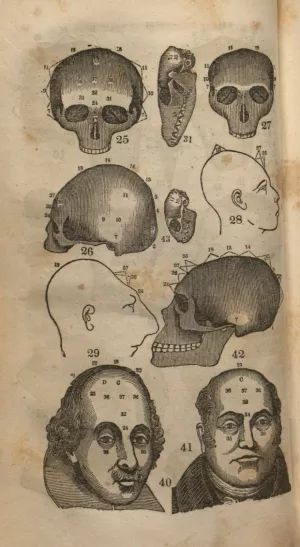Phrenology, the “science” of analyzing a person’s character through the measurement of parts of her skull, reached the height of its popularity in the early nineteenth century. The pseudo-science was fashionable across class lines; handbooks and illustrated guides allowed even the non-expert to evaluate other humans by means of a putatively objective science. Phrenologists taught lecture audiences and readers to see with what Michel Foucault has termed the “clinical gaze,” a method of “reading” a patient by privileging the exterior and the visible as a reliable map of the interior and unknown (see The Birth of the Clinic, 103ff). Caricaturists satirized both the popularity of phrenology as entertainment and the implications of the clinical gaze in society. This gallery explores the work of George Cruikshank within nineteenth-century discourses of phrenology; as the author and artist of Phrenological Illustrations and other phrenological caricatures, Cruikshank simultaneously participated in disseminating phrenology’s tenets and, by drawing attention to the social and commercial aims of phrenologists and to phrenology’s questionable methodology, problematized the pseudo-science's claim to an infallible analysis of its subject.

